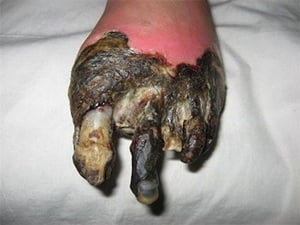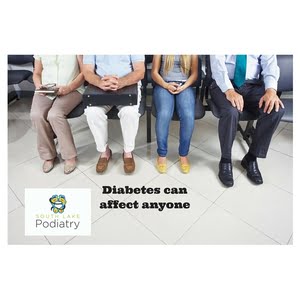Diabetes
What is it?
It is a persistent raised blood glucose level as a consequence of reduced production and/or impaired effectiveness of insulin. It is divided can be divided into two main groups: insulin dependent diabetes mellitus (IDDM) and non-insulin dependent diabetes (NIDDM)
Complications of diabetes
Diabetic patients may develop a variety of complications which include microvascular disease (retinopathy and nephropathy), nervous system abnormalities and macrovascular disease (coronary, peripheral vascular and cerebral vascular disease. Diabetics are more prone to having gangrene. At South Lake Podiatry we utilise ultrasound Doppler to assess the vascular system in the feet and use an expansive array of diagnostic tools to determine whether the patient has neuropathy. Our aim is to assess, educate, and refer those patients that need specialist intervention.
Neuropathy
At South Lake Podiatry we specialise in the assessment of the peripheral nerves, as they are prone to damage in diabetes (Watkins 1992) The damage can be classified into: progressive, reversible and pressure palsies (foot drop). It affects 11-50% of diabetic patients and is always symmetrical and diffuse. It usually starts with the smallest fibres (pain, temperature, autonomic) and sometimes but not always progressive to involve all types of nerve fibres.
Signs and symptoms of neuropathy
Patients can feel constant ‘burning’, paresthesiae and shooting pains together with exquisite contact discomfort caused by clothes. It can be continuous day and night and result in severe insomnia. They occur in a symmetrical sensory stocking distribution affecting both feet or it may be confined to the nerve root affecting feet and/ or legs. In addition it may be accompanied by muscle wasting and may cause patient falls.
Diagnosis
We are the only Podiatrist in WA that uses a neurothesiometer to diagnose peripheral neuropathy. It assesses the vibration perception threshold (VPT) at chosen areas on the surface of the body. This allows for a more objective and reliable understanding of VPT than traditional methods. We target this treatment for diabetics and those suffering from peripheral neuropathy. The evidence regarding the use of monofilament is unreliable as there is operator error.


